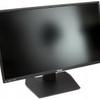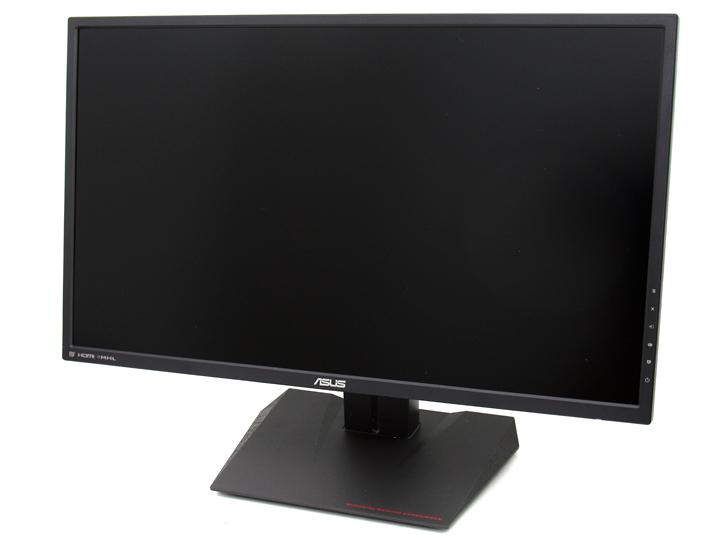Tested & Reviewed
ASUS MG279Q with FreeSync / Adaptive Sync
4ms - 144 Hz gaming on an IPS display, free from screen tearing and/or sync stuttering
In this review we will test the 599 EURO FreeSync capable ASUS MG279Q Gaming, a 27-inch 2560x1440 monitor that can do 144Hz. The MG279Q is also FreeSync compatible, which eliminates stutter and tearing while gaming. All features combined quickly makes you realize that the MG279Q Gaming is a spectacular IPS panel based monitor. It offers great image quality and heaps of display connectivity as well. Though the Asus MG279Q has been around for several months now it was still on my 'to-do' list for an in-depth review. As it turns out, it's a bit of beast. This 27in puppy has been fitted with an IPS panel capable of 144Hz at a 2,560x1,440 resolution, that would be WQHD.
FreeSync
The Asus MG279Q is FreeSync compatible, with a good dynamic range as well I must say, at 35 to 90Hz. Outside of these ranges FreeSync doesn't work, but AMD has found an intermediate solution for such ranges as well, more on that later though. Nvidia has GSYNC and AMD offers FreeSync, a technology that eliminates the problems that come with VSYNC (both on and off) versus what is displayed on your monitor. Basically FreeSync is synonymous with Adaptive Sync, a technology that was developed for the mobile market years ago. But with monitors not being compatible nobody paid any attention to it.
So ya'll know that when NVIDIA announced GSync shortly thereafter AMD realized that they already had something similar available, hidden and harbored deeply as a technology with a purpose for laptops. To jump onto that bandwagon AMD figured, hey if we can get manufacturers to offer monitor support that can chew on a dynamic refresh-rate and develop FreeSync into a VESA standard then you would get the same experience as GSYNC offers, but at lower cost as you do not need an expensive GSYNC module - right? So the graphics card is running a dynamic device that outs its frames in a varying FPS, the problem is that your monitor has a static refresh-rate (Hz), these two don't really match together. To gain the maximum out of your graphics card you can turn off VSYNC on your monitor but that will result in multiple rendered images per shown frame, the overlapping difference is what you guys see as screen tearing. With VSYNC activated a somewhat similar thing happens as the graphics card tries to stay as close to 60 FPS as possible, however if incapable of sustaining 60 FPS or Hz, you can see an effect that we call soft sync stuttering. Soft sync stuttering is relative, honestly. Screen tearing however is just a nasty thing. So the biggest culprit is tearing. Considering that the hardcore FPS gamer obviously wants extremely high FPS, and for these frag-masters the alternative is simply disabling VSYNC. However, if you have that same 35 FPS framerate on 60 Hz, you'd see visible screen tearing. Heck, this is why framerate limiters are so popular as you try to sync each rendered frame in line with your monitor refresh rate. But yeah, these are the main reasons for all sorts of screen anomalies. Ever since the start of the 3D graphics revolutions, we simply got used to these sync stutters and/or screen tearing. To compensate we have been purchasing extremely fast dedicated graphics cards to be to be able to match that screen refresh rate as close as possible. Over the years the industry tried to solve problems like vsync stutter or tearing basically in two ways. The first way is to simply ignore the refresh rate of the monitor altogether, and update the image being scanned to the display in mid cycle. This you guys all know and have learned as "VSync Off Mode" and is the default way most FPS gamers play. If you however freeze the display to 1 Hz, this is what you will see, the epitome of graphics rendering evil, screen-tearing. We have taken this for granted for many years, screen-tearing and VSYNC stutters, but anno 2016 there are now solutions for it, as this monitor shows. With FreeSync you are tied to AMD Radeon graphics cards though.
Enough about FreeSync though. The numbers will show that the IPS panel that ASUS uses is pretty sweet, it provides 100 percent sRGB coverage with 80% of AdobeRGB color space. Thanks to IPS it also allows for 178-degree viewing angles. It is rated as having a 4ms response time. So yeah, that's a lot of features, resolution and performance. The Asus MG279Q isn't priced badly either, you can pick this puppy up for about 580 EURO. Alright, we got the basics covered, let's move onwards into the review.


